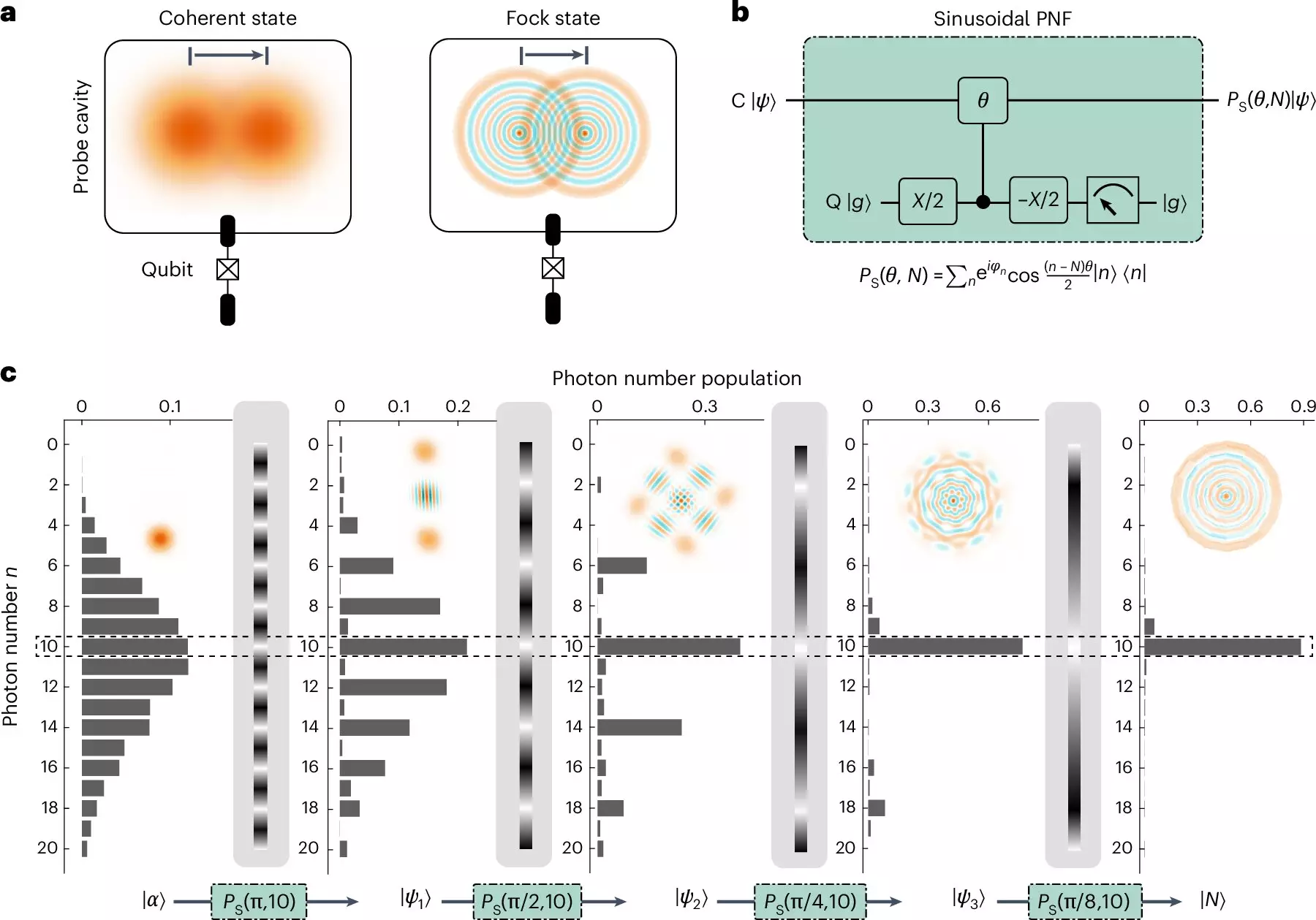The realm of precision measurement holds significant potential for various scientific and technological advancements. With applications in areas such as physics, engineering, and beyond, the ability to achieve highly accurate measurements can unveil new insights and validate existing theories in transformative ways. Among the most promising developments in this field are quantum-enhanced metrology techniques that harness the unique properties of quantum states to outpace classical measurement methods. However, the challenge lies in effectively manipulating these non-classical states to achieve the desired precision.
A recent manuscript published in *Nature Physics* showcases a novel quantum-enhanced metrology approach pioneered by researchers at the International Quantum Academy, Southern University of Science and Technology, and the University of Science and Technology of China. The innovative research focuses on the generation of Fock states—quantum states characterized by a fixed number of photons—aiming to utilize these states for exceptionally precise measurements, particularly concerning weak microwave electromagnetic fields.
Yuan Xu, a co-author of the publication, elaborated on the research’s objectives, emphasizing the potential of microwave Fock states located within superconducting cavities. These states boast highly refined interference characteristics in their phase space, which can be capitalized on for precise detection of even minute shifts induced by external microwave fields. In essence, the larger the photon count in a Fock state, the finer the interference fringes become, leading to greater measurement accuracy.
To realize advancements in metrology that could surpass classical methods, Xu and his team focused on a systematic approach to generate Fock states containing nearly 100 photons. Central to their methodology are two distinct photon number filters (PNFs): sinusoidal PNF and Gaussian PNF. These filters work together to selectively generate the desired Fock states by utilizing the interaction of an ancilla qubit with the cavity states.
In practice, the sinusoidal PNF employs a conditional rotation incorporated into a Ramsey-type sequence, allowing the researchers to target specific photon counts based on the ancilla qubit’s state. Conversely, the Gaussian PNF involves a qubit flip pulse characterized by a Gaussian profile, which effectively compresses and concentrates the photon number distribution around the desired Fock state. This dual-filtering method significantly enhances the efficiency of Fock state generation, providing a logarithmic scaling benefit in circuit depth, making it a more practical alternative to earlier approaches that relied on polynomial scaling.
The promising results from this inquiry into quantum metrology indicate the potential for achieving substantial metrological gains. Initial experimental outcomes showed that this new quantum measurement approach can outperform classical methods, achieving an impressive gain of 14.8 dB and moving closer to the theoretical limits established by the Heisenberg uncertainty principle. This leap in precision measurement has exciting implications across various scientific disciplines, from fundamental physics to applied technologies.
The versatility of this method is noteworthy, as it is applicable not only to microwave systems but also to mechanical and optical platforms. Xu and his colleagues rightly see their research as not just a technical achievement but also a foundational resource that could ignite further exploration into the quantum realm. By providing a testbed for investigating complex quantum phenomena, their work may pave the way for new theoretical and experimental discoveries.
The implications of advancing quantum metrology are significant, with applications including high-precision radiometry, weak force detection, and investigations into dark matter. There is a shared optimism within the research community, as Xu and his team continue their efforts to enhance the coherence of their quantum systems, which is crucial for scalable quantum control techniques that facilitate Fock state generation with even higher photon counts.
As they look to the horizon of research opportunities, the commitment to improving coherence performance and implementing robust methodologies indicates that the future of quantum-enhanced measurement is bright. The potential for revolutionary breakthroughs in measurement accuracy could unlock new paths for scientific inquiry and technological innovation, providing the tools needed to tackle some of the most profound challenges in modern physics and beyond.
In summation, the rapid development of quantum-enhanced metrology presents an exciting frontier in precision measurement science. With innovative approaches to generating large Fock states and the promise of unprecedented metrological gains, the field stands poised for significant advancements. Through continued exploration and refinement of these techniques, researchers aspire to not only achieve precise measurements but also make profound contributions to our understanding of the universe. As this research progresses, we eagerly anticipate the exciting discoveries that await, driven by the power of quantum technology.

